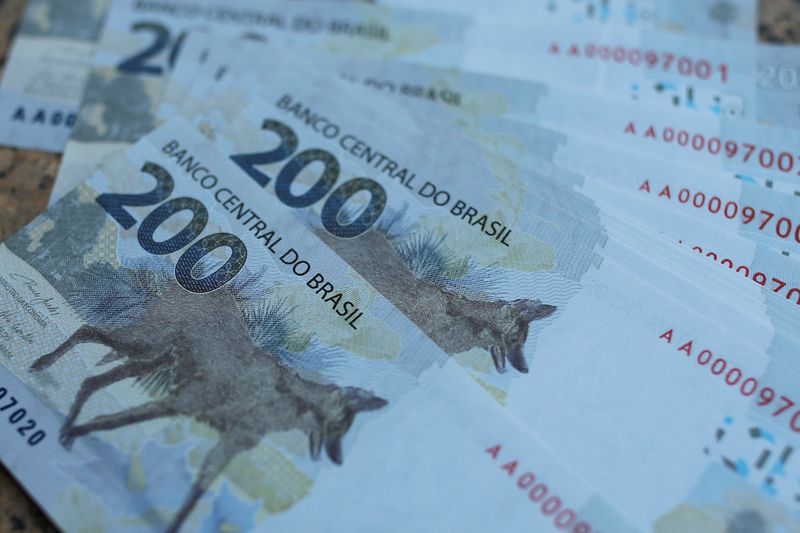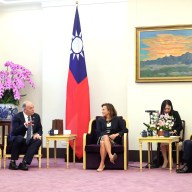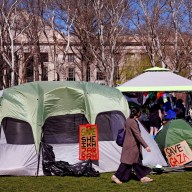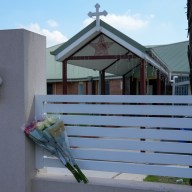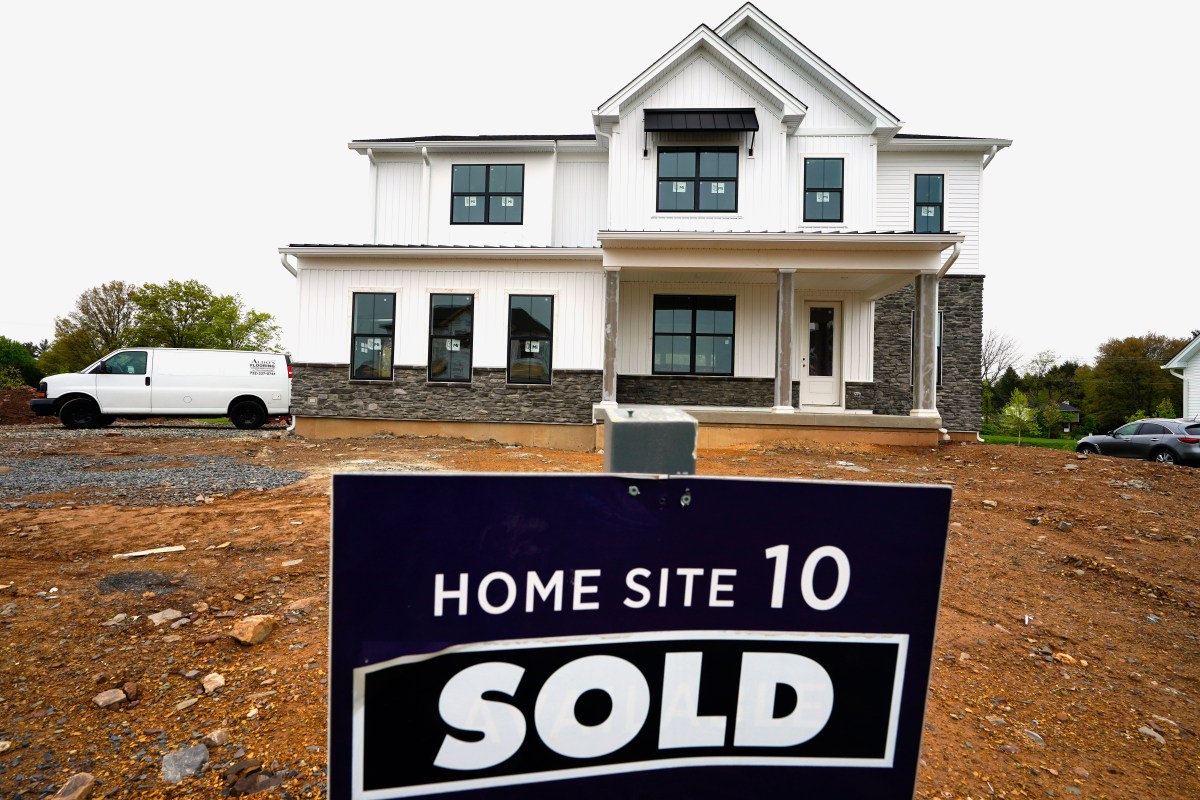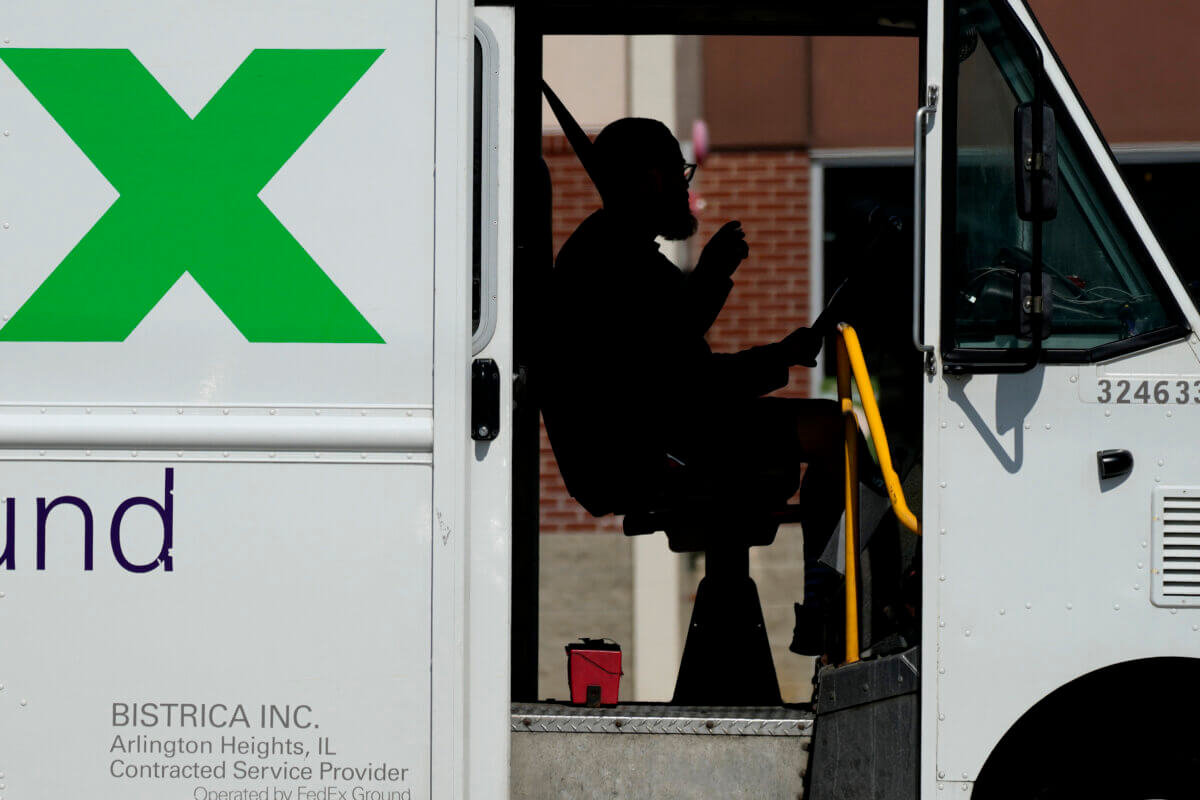BRASILIA (Reuters) – Brazil’s real, one of the world’s worst-performing currencies this year, is set to get a shot in the arm from the central bank’s stronger-than-expected interest rate hike on Wednesday and pledge of a second dose in May.
The central bank’s aggressive start to its tightening cycle, coming on the heels of its recent burst of foreign exchange market interventions, will put a floor under the real in the near term, analysts say.
The signal from the U.S. Federal Open Market Committee on Wednesday that it is in no rush to raise U.S. interest rates should also keep the dollar in check, providing another layer of support for emerging-market currencies.
Strategists at global FX power-houses Citi and Barclays are among those recommending buying the real, via derivatives markets, on the belief that it will strengthen against the dollar over the coming weeks, and maybe even months.
The medium-term outlook, however, may be less certain.
Although Brazil’s central bank jacked up official borrowing costs by 75 basis points to 2.75% and said it will probably do so again in May, real interest rates will still be negative for some time, and therefore relatively unappealing to investors.
Inflation is running at 5.2% and heading for over 7% in the middle of the year before subsiding. The central bank’s own forecasts on Wednesday had it ending the year at 5.0%, well above its official goal of 3.75%.
Graphic: Brazil real rates – https://fingfx.thomsonreuters.com/gfx/mkt/yxmvjwboepr/REALRATES.png
In addition, the consensus among economists holds that while the central bank’s rate-setting committee, known as Copom, has started its tightening cycle aggressively, the end point for interest rates has probably not changed much, if at all.
This comes against the backdrop of an alarming public health crisis. Brazil is now the global epicenter of the COVID-19 pandemic, and a deadly second wave and slow vaccination program spell danger for the economy and public finances.
“The real is likely to benefit from the outcome of March’s FOMC and Copom meetings, but is not out of the woods yet. In the very near term, the evolution of the pandemic and vaccine rollout remain key for the real,” UBS strategists wrote in a note on Thursday.
Morgan Stanley strategists withdrew their recent call to sell the real and now expect “some near-term stabilization in the currency” following the Brazilian and U.S. policy moves on Wednesday, but warned that “medium-term risks remain intact.”
HIKING FASTER, NOT FURTHER
On the domestic rate front, one of the key issues for the real’s longer-term performance will be the extent to which investor expectations on Copom’s tightening cycle shift.
So far, the signs are: not much.
Before Wednesday’s decision and statement, the consensus view of over 100 economists in the central bank’s weekly “FOCUS” survey was that the Selic will end this year at 4.50% and next year at 5.50%.
While several economists have since brought forward their rate hike forecasts, few have actually increased them. Thus, the central bank is now expected to raise rates more quickly, but ultimately not further, than originally thought.
The currency’s move on Thursday provided an early indication of how much tightening was already in the real’s price. It rallied sharply at the open, almost 2% at one point, but by midday was up barely 1% around 5.54 reais.
While many countries are vaccinating large swathes of their population against COVID-19 and opening up their economies, Brazil has fully vaccinated less than 3% of its population and is registering record numbers of new cases and fatalities.
The national public health system is on the brink of collapse, several states are going back into lockdown and the government on Wednesday said the economy will likely shrink by 0.35% in the first quarter. Many economists are penciling in a steeper decline and say risks to the second quarter are rising.
A key measure of investors’ fear levels over Brazil’s public finances and ability – or willingness – to reduce its record debt is the interest rate curve. A steeper curve reflects a growing risk premium built into longer-dated debt maturities.
Some of Brazil’s rate curves have steepened to record levels in recent weeks. Bold central bank action to counter rising inflation and growing fiscal risks should help flatten them, analysts say.
But early on Thursday the spread between January 2022 and January 2027 rates futures was still near last week’s record high around 440 basis points and had actually widened slightly.
Graphic: Brazil rate spread – https://fingfx.thomsonreuters.com/gfx/mkt/dgkvlebgkpb/ratespread.png
(Reporting by Jamie McGeever; Editing by Dan Grebler)

